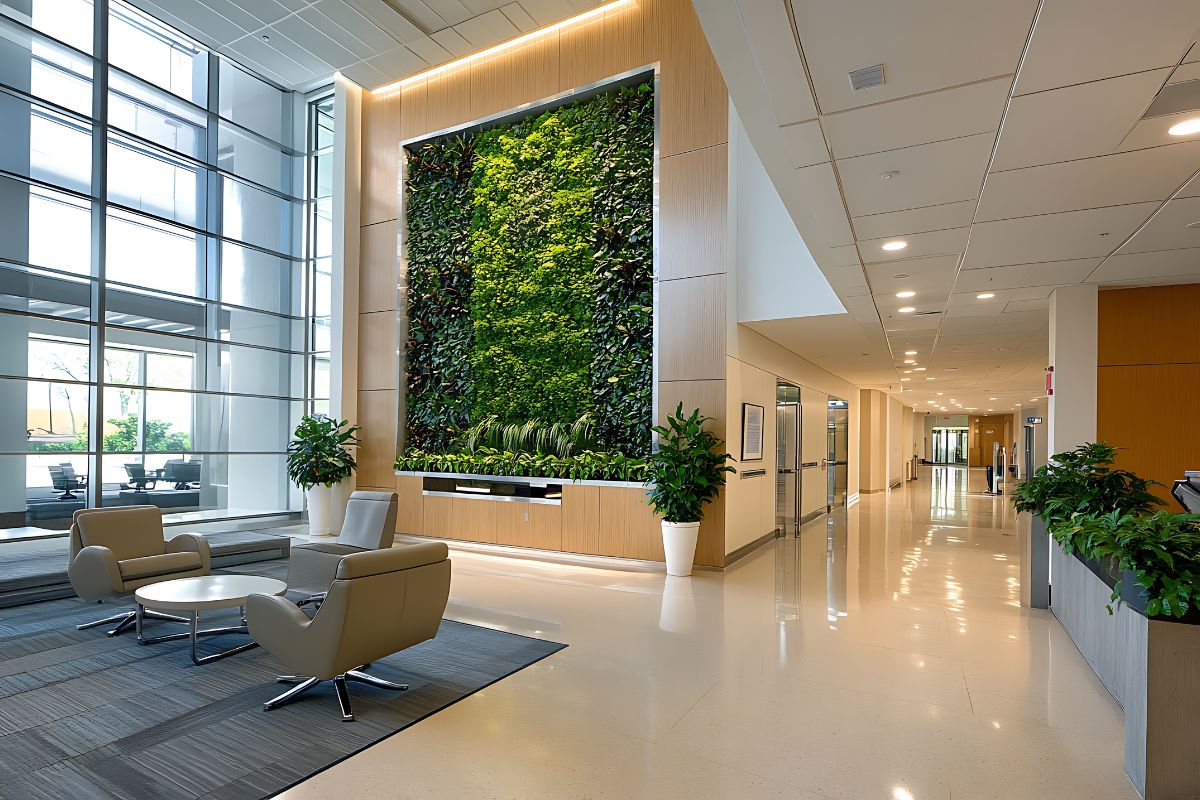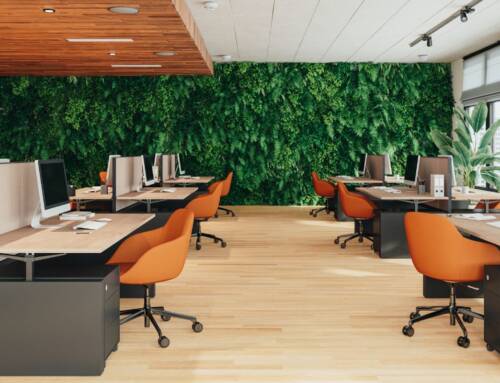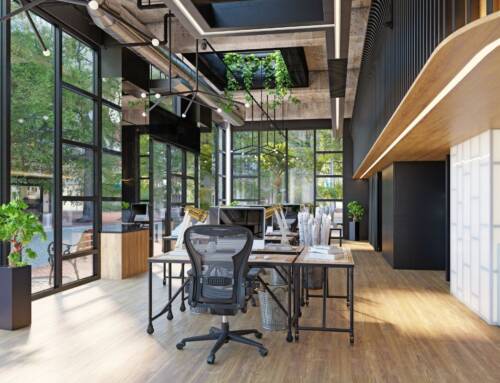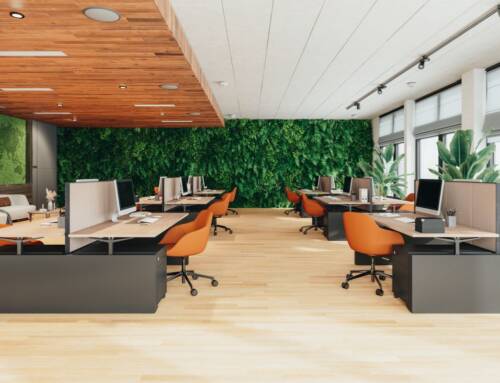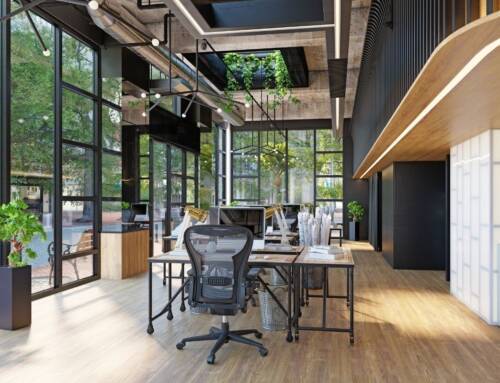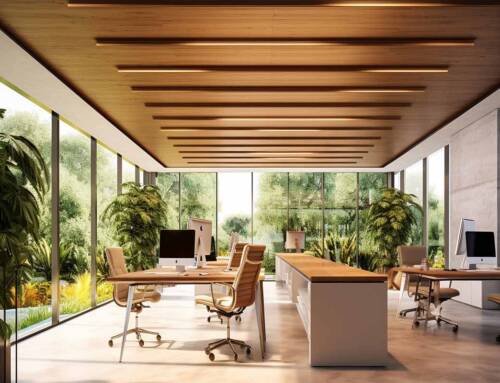Your office operating costs keep climbing. Energy bills, maintenance expenses, and equipment replacements add up month after month, quietly eating into your margins. Sound familiar?
Most business owners see sustainable office design as a nice-to-have, something for companies with deep pockets and a strong CSR agenda.
But here’s what they’re missing: green office design isn’t just about saving the planet. It’s about saving money, and quite a bit of it.
The Real Cost of Traditional Offices
Let’s talk about what you’re really spending. The average office in Singapore has substantial electricity costs, and in our tropical climate where air conditioning isn’t optional, those bills add up fast. Energy expenses alone can be a major drain on operating budgets.
But energy bills are only part of the story. Traditional office furniture and fittings need replacing every few years on average. Cheaper materials degrade faster in our humidity, meaning you’re back to square one sooner than you’d planned.
Factor in the maintenance costs for outdated HVAC systems that work overtime in our heat, and suddenly that “affordable” conventional office setup doesn’t look so economical.
Then there are the costs you don’t immediately see on a spreadsheet. Poor indoor air quality leads to more sick days. Studies show that employees in buildings with poor ventilation take significantly more sick leave. A stuffy, uninspiring office also affects retention.
When talented employees leave for companies with better work environments, you’re facing steep recruitment and training costs. These hidden expenses compound year after year, silently draining your resources.
Where Sustainable Design Saves Money
Here’s where things get interesting. Sustainable office interior design in Singapore isn’t about spending more upfront for bragging rights. It’s about strategic investments that pay dividends.
Smart Lighting That Actually Makes Sense
Switching to LED lighting with smart controls can dramatically slash your lighting costs. That’s not marketing hype, that’s basic physics. LEDs use a fraction of the electricity that traditional fluorescent tubes consume, and they last significantly longer. Lighting is a major component of electricity consumption in most offices, and reducing it creates substantial savings before you’ve done anything else.
Add motion sensors and daylight harvesting systems, and you’re optimising further. Lights only turn on when someone’s actually in the meeting room. They dim automatically when natural light is sufficient. These systems pay for themselves within 2-3 years, then it is pure savings.
Natural Light: Your Free Asset
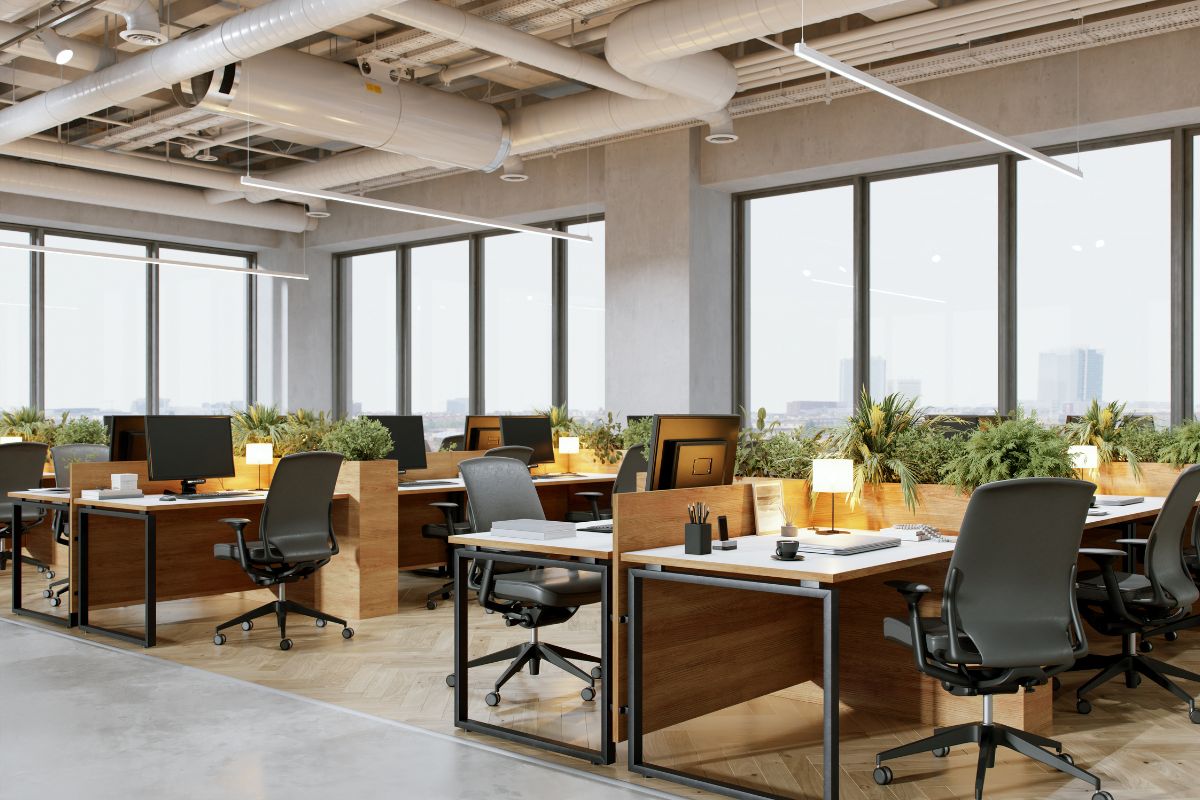
Singapore gets plenty of sunshine, even on overcast days. Maximising natural light through thoughtful space planning reduces your reliance on artificial lighting during business hours. Floor-to-ceiling windows, glass partitions, and strategic desk placement can cut daytime lighting costs dramatically.
There’s a bonus here too. Natural light improves employee wellbeing and productivity. Research consistently shows that workers in naturally lit spaces are more alert, take fewer sick days, and report higher job satisfaction. That’s not fluffy feel-good stuff – that’s measurable impact on your bottom line.
Furniture That Goes the Distance
Modular, quality furniture made from sustainable materials costs more initially. But here’s the consideration: cheaper options need replacing far more frequently and offer poor support. Quality pieces last many times longer while keeping your team comfortable and productive. Over the long term, you’re actually spending less while providing better working conditions.
Modular furniture offers another advantage. When you need to reconfigure your space as your team grows or work patterns change, you’re rearranging existing pieces, not buying new ones. That flexibility saves money every time you’d otherwise be calling in contractors and furniture suppliers.
Air Quality That Keeps People Healthy
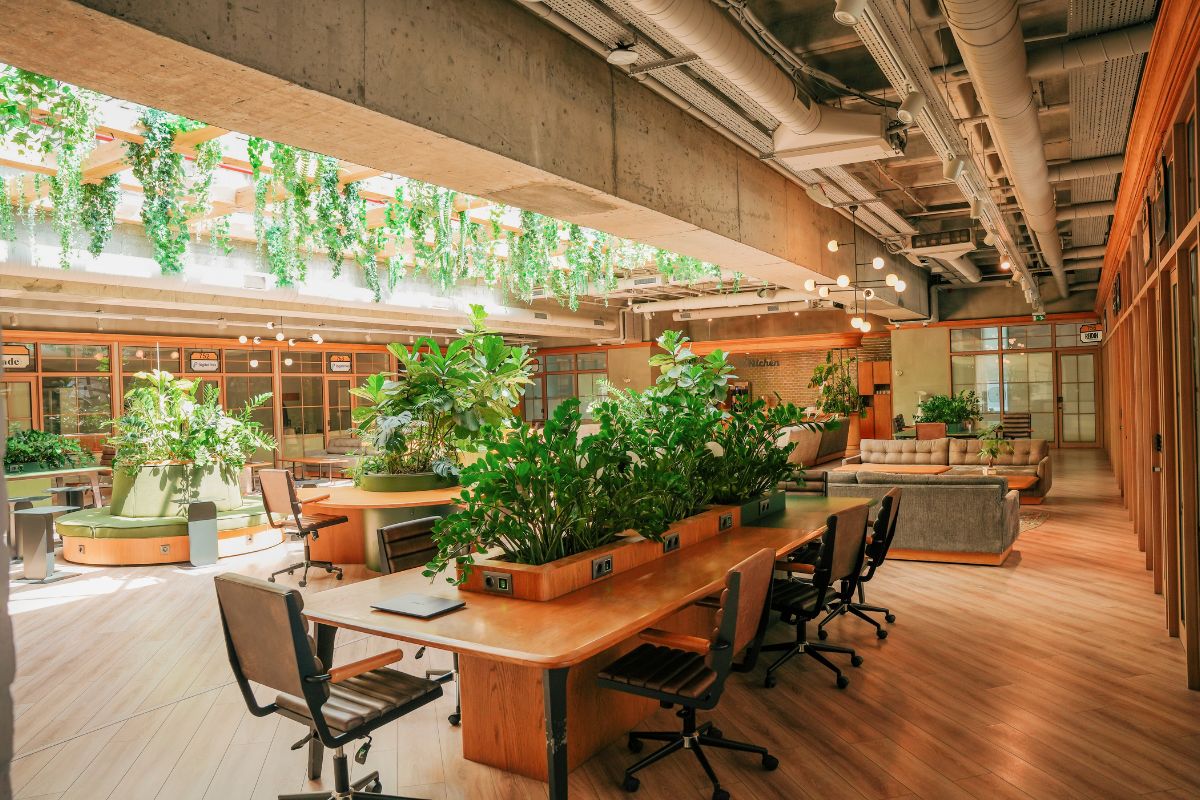
Better ventilation systems and air purification might sound like luxuries, but in Singapore’s context, they’re investments in productivity. The improved indoor air quality from green design practices reduces respiratory issues, headaches, and fatigue. When your team takes fewer sick days, you’re not just saving on disruption – you’re maintaining consistent productivity and output.
Plants aren’t just decoration either. Strategic biophilic design with proper greenery actually improves air quality while creating a more pleasant environment. Happy employees stick around longer, and recruitment costs are consistently one of the biggest drains on small to medium businesses.
The Retention Factor
Here’s something many business owners underestimate. Top talent, especially younger professionals, actively seeks out employers with strong sustainability credentials. It’s not just about values. It’s about working somewhere they’re proud to be. The cost of replacing a skilled employee is substantial and often underestimated. If sustainable design helps you retain even one or two key people per year, it’s paid for itself several times over.
The ROI Timeline: Being Realistic
Let’s be honest about timeframes. You’re not going to see full returns immediately. For most businesses, the complete payback period for a comprehensive sustainable office design takes several years. That’s not instant gratification, but it is solid business sense.
However, not everything takes years to pay off. Some changes deliver quick wins:
Short-Term Returns:
- LED lighting retrofits
- Smart thermostats and controls
- Water-efficient fixtures
Medium-Term Returns:
- Energy-efficient HVAC systems
- Solar panels (with government incentives)
- High-quality insulation and window treatments
Longer-Term Returns:
- Premium sustainable furniture
- Comprehensive building management systems
- Major space reconfigurations for natural light
If budget is tight, start with the quick wins. Replace lighting first. Upgrade to smart controls. These create immediate savings that can fund larger investments later. You don’t need to do everything at once to start seeing benefits.
Singapore-Specific Advantages
Operating in Singapore actually gives you some advantages when it comes to sustainable design. Our government actively supports green building initiatives through programmes like the BCA Green Mark scheme. Depending on your green rating, you might qualify for tax incentives, grants, or preferential financing. These programmes can significantly offset initial costs.
Our tropical climate, often seen as a challenge, actually makes some sustainable choices more cost-effective. Solar panels produce consistent energy year-round without the seasonal variations that plague temperate regions. The strong, consistent sunlight means faster ROI on solar investments than many other countries see.
Local sourcing also works in your favour. Singapore’s push for regional supply chains means sustainable materials from Southeast Asia often cost less than importing conventional materials. Bamboo, reclaimed wood, and other eco-friendly options are increasingly available locally, cutting both costs and carbon footprint.
The dense urban environment means shared services and centralised systems can be more efficient. District cooling, shared renewable energy, and collaborative sustainability initiatives are more feasible here than in sprawling suburban office parks.
Making It Add Up
Sustainable office design isn’t about choosing between profitability and responsibility. It is about recognising that they align. Lower operating costs, healthier employees, better retention, and future-proofed spaces. These aren’t separate from your business goals. They are your business goals.
The businesses winning in Singapore’s competitive market aren’t the ones spending the least. They’re the ones spending smart. They understand that cutting corners on office design means paying more in the long run through higher utilities, more frequent replacements, and lost productivity.
If you’re ready to look beyond this quarter’s expenses and plan for sustainable profitability, start with an audit of your current costs. Look at your utility bills, maintenance records, and employee feedback. The savings opportunities are probably bigger than you think. For more detailed strategies on creating a sustainable office, the investment pays for itself. Then it keeps paying.
That’s not idealism. That’s just good business.
Want to see exactly how much your office could save?
The team at Greeen specializes in sustainable office interior design that delivers measurable returns. From quick-win lighting upgrades to comprehensive space transformations, we’ll help you build a strategy that fits your budget and timeline. Contact us for a consultation and let’s map out your path to lower costs and better productivity.

